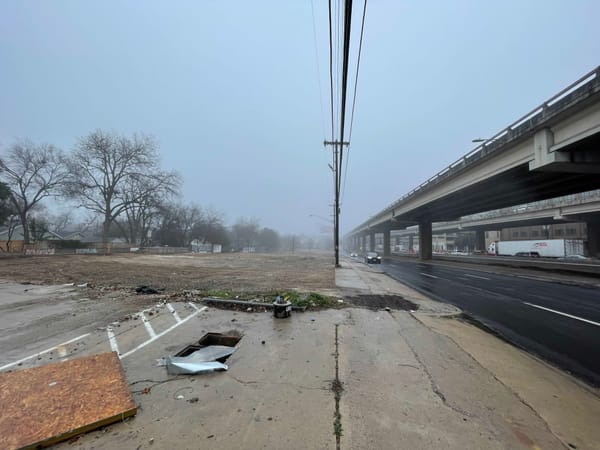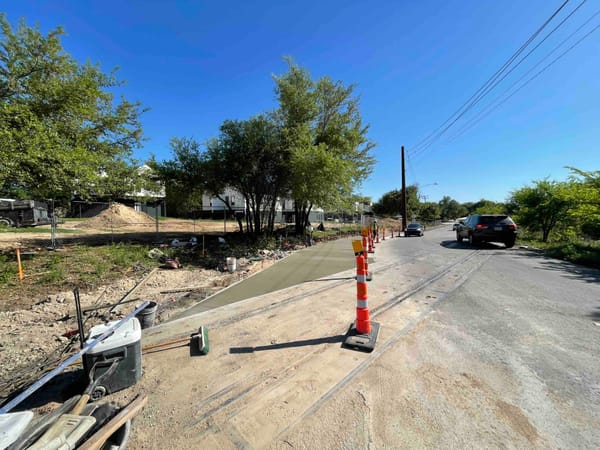A cautionary tale in Houston
Zoning is only one of the big fights for urbanists.

There's a lot to like about Houston. It's extraordinarily diverse and, perhaps in no small part to its light regulation of housing (most notably its infamous lack of zoning), it is one of the most affordable big cities in the U.S. Furthermore, despite being notoriously car-centric, the city is far ahead of Austin on public transit. It has a decent light rail system and its buses have returned to pre-pandemic ridership.
And yet, Houston is also a cautionary tale. Here are a few examples.
Zoning isn't the only barrier to urbanism
Houston famously doesn't have zoning, and 25 years ago it reduced its minimum lot size to 1,400 sq ft. When it comes to housing, that's a good thing. The introduction of smaller lot sizes produced a surge in cheaper housing types in some of the most desirable central neighborhoods.
In Austin (and many other U.S. cities) urbanists correctly have identified the mid-20th century zoning paradigm as a major contributor to car dependence. Single-family zoning facilitates low-density sprawl which is very hard to serve with transit. Similarly, our zoning code typically segregates housing from commerce, which reduces the number of people living within walking/biking distance of a groceries, retail, restaurants, night life etc.
But just as eliminating exclusionary zoning alone won't solve our housing crisis, nor will it dramatically reshape our travel behavior. We need only to look at Houston, the epitome of car-centric sprawl.




